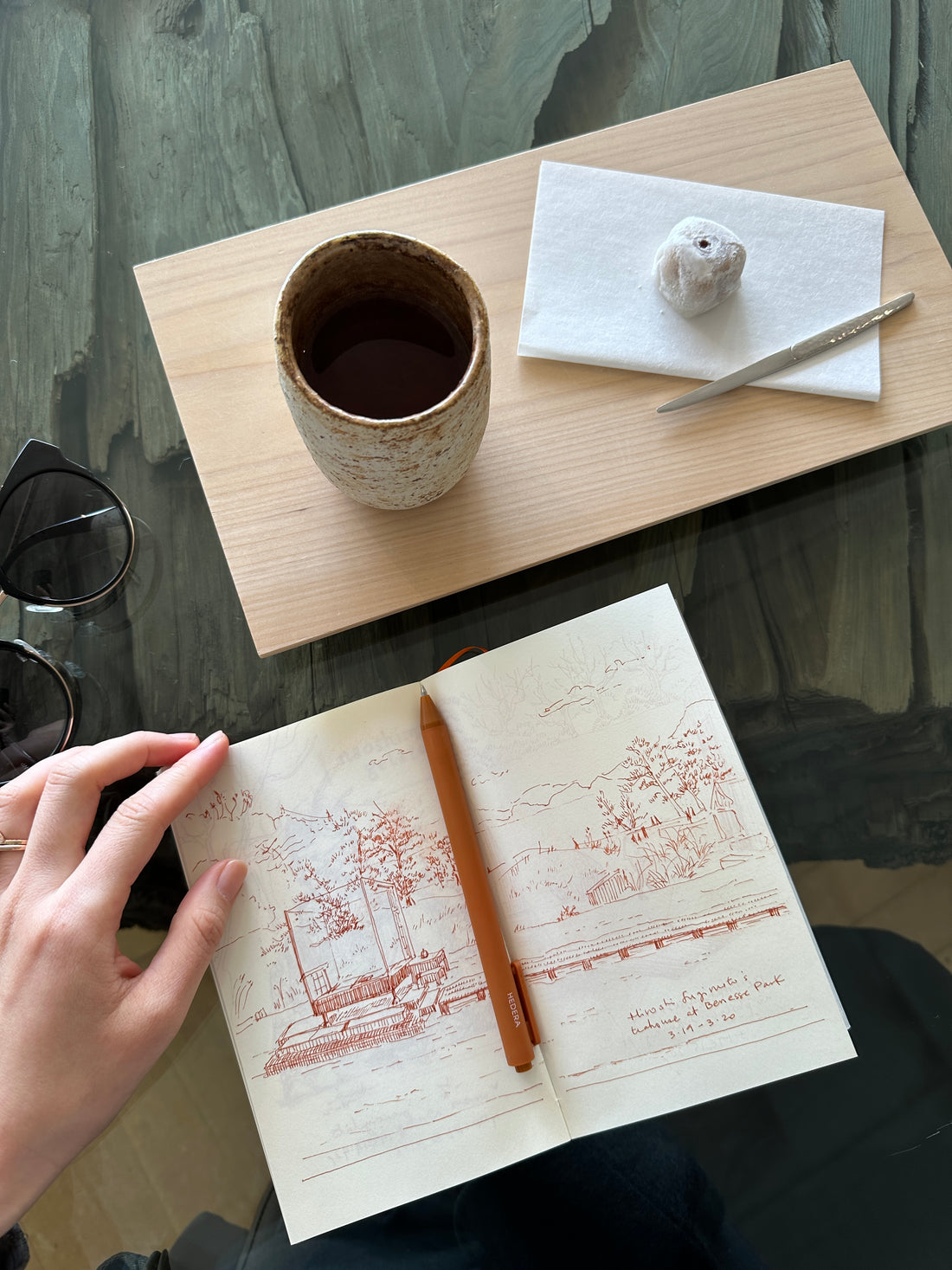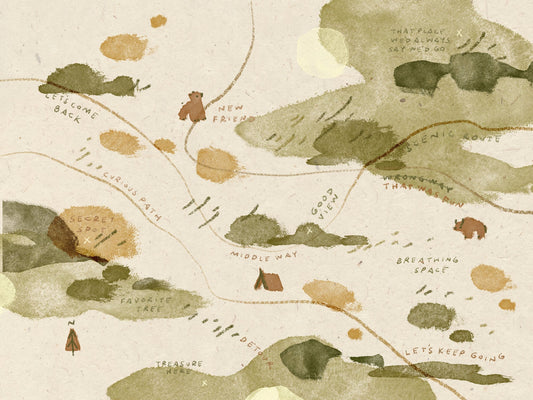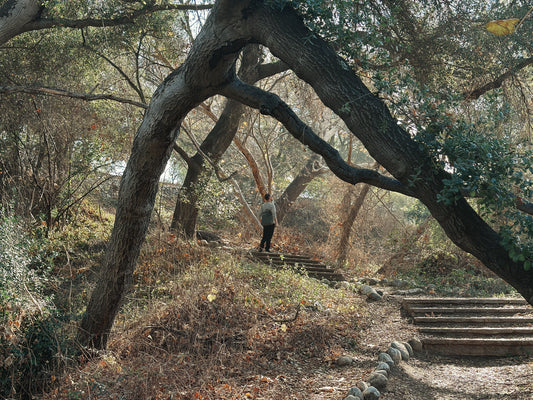
Best Resources for Learning to Draw
People often ask me how to start learning to draw or how to improve on their skills. I learned to draw using online and traditional classes, books, YouTube, and other free resources. I also love teaching, so over the years I've been making classes about many of these topics that I hope beginning artists will find helpful.
Below are the resources I recommend for people looking to self-teach themselves drawing. I have categorized them by 'Casual Hobbyist Resources' and 'Professional Illustration Resources.' You can definitely get pretty far simply from free or relatively inexpensive resources these days. Please keep in mind this is my personal opinion based on my experience. I believe there is no one right way to learn, but I do believe in being strategic, disciplined and efficient with learning. At the end of the day, I think it's best to hear everyone's approach and then decide what is best for you.

Practice sketchbooks from back in 2016! 👆
Self-Learners: Where to Start
As for where to get started, I would say your path depends on your goals:
Casual Hobbyist: Do you want to just get better for fun/relaxation?
Professional Illustration: Do you hope to become a professional illustrator/artist one day?
For both of these paths, I would say the main thing is just to start drawing. And if you can, practice daily! Consistency is really important, just like when you are working out. If you start and stop with long gaps in between workouts, you don't build the muscle nearly as quickly. Drawing is a muscle. Honestly, anybody can learn how to draw at a basic proficiency if they want to, just like anyone can learn to cook at a basic level. I genuinely mean it! It just takes the initiative to learn and practice. And it's worth it!
The best part is that learning how to see with an artist's eye makes you see and appreciate the world in a whole new way. Paying attention to details, observing with awareness, drawing is its own form of meditation.

Old portrait studies, which I still do 👆 I notice so much more about the details of one person's face in 30 minutes than I do about people who I've known for years.
Casual Hobbyist Resources
I would recommend watching hobbyist-friendly drawing tutorial videos and getting some fun books :) Draw what you like. Keep it fun and you'll naturally want to do it more often!
1. Books—Beginner: It's also fun to get some casual books such as Draw 50 Animals or 20 Ways to Draw Everything. I like books based around pretty themes such as The Creature Garden by Harry and Zana Goldhawk.
2. Books—Intermediate: For something a little more advanced, I think Drawing on the Right Side of the Brain is a great intro to thinking about how to draw and how to see the world like an artist. Note: this book is for being able to replicate something you see in front of you, not for being about to draw from your imagination. So it has its limitations.
3. Skillshare: Skillshare is a great place for hobbyist illustrators to learn, though it isn't free. You are taught through fun projects, and the topics usually follow what is trending. Just search "illustration" and look at the top classes. Some great illustration teachers include Tom Froese, Roman Muradov, Cat Coquilette, Jarom Vogel, Picolo, Victo Ngai, and Lisa Congdon.
4. YouTube: The benefit of YouTube is that it's free. But I don't think it's the easiest place to learn from; there are so many distractions. That said, to get started, I think Iraville has a sweet channel. You can browse related channels from her page.

I've amassed a large collection of helpful books!
Professional Illustration Tips & Resources
This is a streamlined version of the path I've gone down, aka the advice I would have given myself when I started in 2015. I'm sure I'll have updates in another year, and another five years, and another 10 years, but here's where I am now.
The main difference between this route and the Casual Hobbyist route is you should spend more time mastering the fundamental skills. As a casual hobbyist, you may be happy to replicate someone else's style and just be able to copy. As a professional, you will need to be able to draw things from scratch and develop your own style.
Identify your goal. What do you want to ultimately do? Graphic novelist, animator, general illustrator in many practices, concept artist for video games, etc.? If you're not sure, can you at least identify some artists you admire and consider being #goals? This will help focus your path. Don't worry, you can always adjust it later, but it's a good guiding star. For example, I thought I wanted to be an editorial illustrator for magazines and books, or a visual development artist for a studio. Those are quite different so I had to think about a style that could work for both. Eventually I didn't want to do either, but the style I developed, I did like and use for what I do now. So it works out!
Understand "Why." I really believe it should start here. So often art schools (or honestly, any school) jump straight into the tedium of basics without getting people excited about why they're learning it. Truly understand why you need to learn the basics, and then you will feel motivated. As Picasso famously put it, "Learn the rules like a pro, so you can break them like an artist." It's very true. But hey, I heard that quote before too and I still just tried to jump straight into a style. But if you try this shortcut, it will be very difficult to develop your own strong style. You'll be trapped in your own limitations. Once I saw how learning the basics dramatically improved my ability to interpret that into my own style, I approached the basics much more enthusiastically. So sometimes the detours are necessary to learn the lesson. Again, there's no one right way. I really resonated with what concept artist Stanley Lau said in this video: Get Ready for the Art Industry.
Learn the basics. Learn Anatomy, Color Theory, Light/Shadow, Perspective, etc. There is no getting around this. I tried ;) But after realizing that you really need the basics to express yourself and find your style, I put in the time to learn them and it's been so necessary and worth it!
- Drawing Foundations: After countless classes and hours of self-study, I put together a Drawing Foundations class that teaches the basics in a way would have really helped me when I started my drawing journey. It's designed to make your drawing practice fun, beautiful, and efficient, and I teach with the gentle mindful approach that I think is so important to keep you motivated and enjoying the journey. The class provides a foundation in observational drawing, line & shape, value & form, color & light, perspective & depth, and simplified faces & hands anatomy.
- Here are some additional resources I have found helpful:
- Drawing basics: Draw a Box is another fantastic free resource. The creator took courses at Concept Design Academy and translated them into beginner-friendly chunks for free online consumption. I also really liked the book The Natural Way to Draw by Nicolaides. It will feel a bit counterintuitive as many of your drawings will be messy sketches, but it really invokes the spirit of drawing that gives your drawings an authentic natural feel. Andrew Loomis also has many great books on drawing.
- Anatomy: Proko is the best free resource I have found to learn human anatomy. He's engaging and puts in a lot of effort to make his videos easy to understand. The free ones are enough to get the grasp of it. He also offers a paid course for you to dive deeper. I didn't purchase this one but I would have if my work required more advanced anatomy comprehension.
- Color: Color is deceptively challenging to really get right. I thought I knew color but it turned out to be one of the hardest skills for me to nail down. Besides reading articles through Google, I really appreciated Joseph Albers' Interaction of Color. Besides basic color theory, he really gets into the illusion and relativity of color. There's actually a cool interactive iPad app version that you should get instead of the book if you have an iPad. It's worth the cost.
- Perspective: Besides Draw a Box, I appreciate the books How to Draw and Perspective Made Easy.
- Lighting, Shading, Rendering: A great book on this challenging topic is How to Render. The artists behind Tonko House also have a great Schoolism class on Painting with Light and Color.
- Digital Painting: I think CTRL Paint is a great free resource to teach yourself online. There are plenty of amazing digital speed painting videos on YouTube you can see to supplement this. Also, check out my Intro to Digital Painting class in Mimochai Studio and on Skillshare. :)
- IWatch YouTube Videos. I am subscribed to most of the YouTube channels listed on this blog article here. I don't have time to watch them all, but I did watch quite a few of Stanley ArtGerm Lau and Draw with Jazza's videos. Brushboost is another channel not listed that is worth watching.- Online Courses. There are also many professional-level online courses now too, such as Schoolism and Domestika. Skillshare skews more beginner but has several more advanced courses now, and I think their Original and Top Teacher illustration classes I listed above will definitely help in your professional development.
Supplement As Needed. I think it makes total sense to maximize what's available for free through the resources above and then supplement it with paid courses on an as-needed basis. Art classes are so expensive and I think should be chosen with care. This will cost way less than art school while still giving you professional guidance. In Los Angeles, Art Center at Night and Concept Design Academy are highly regarded; I've tried one class from each and they were both helpful.
Practice Daily, and Deliberately. There is no getting around putting in the hours. However, there is a way to do it smart. A good tip is to practice in a focused manner, or "deliberate practice." Identify your weaknesses and hone in on that. Repeat drawings and studies until you get it right. If you just draw a bunch of different things all the time, you'll still improve, but not as quickly. Draw with Jazza and Proko both have good videos on this point. Full disclosure: I'm guilty of this myself! I get tired of drawing the same thing over and over and like to draw new things. I try to find the best balance for me in terms of deliberate practice and keeping myself interested.
If you'd like support with ideas and motivation to draw daily, check out my Daily Pages class in Mimochai Studio and on Skillshare :)
Study the Masters. Once you have your basics in order, I would recommend studying the pros in whatever field you want to pursue. Master studies are one of the most common exercises in art school. Find people you admire (and don't limit yourself to current artists; for example, I love looking at Rembrandt and Caravaggio's paintings for their epic use of light). Really focus on their technique and design decisions. Do sketch studies in your notebook or iPad that are for your eyes only. I've received questions like, "I don't know what to practice drawing, and I feel guilty copying other people's drawings. What should I do?" Remember, master studies are a common exercise in art school! There's no guilt in doing this as long as you don't pass it off as your original work. Don't bother taking their style and making it your own; it's already been done. At some point your style will come out of you, a combination of your entire life experience plus the styles you admire, all mixed together to become something new.
Take Client Work Seriously. If you're just starting out, you are most likely not going to get the most glamorous illustration jobs. Regardless, take the opportunity to do the best possible work you can. (Of course, do it on your own terms; don't get taken advantage of by bad clients). If you can deliver above and beyond, (1) that's great for your portfolio, (2) it's building your reputation, (3) it might also encourage your client to recommend you to their network. I remember seeing some incredible illustrations for very obscure articles in very obscure journals, and I admire that the artist put in the extra work. I believe it will pay dividends down the road.
Be Your Own Client—aka Make Up Your Dream Project. A lot of people seem to have difficulty coming up with the motivation to practice. To be completely frank, the first thing may be to question if this is truly your passion if that's case. But another problem just might be that you need the right project/vessel for your passion. You do NOT need to wait for a client to work on a project. If anything your passion projects are going to make you practice the hardest. So make up your own dream project and just go for it! When it's something you're super into, taking the time to learn how to do each step will be a joy rather than a pain.
I actually have found these Passion Projects so helpful that I made a class about how to create your own! It's in Mimochai Studio, learn more here. ✨
There are a ton of great professional-level books out there too. And don't forget, you are always able to look up the curriculum and book lists of respected art schools. I personally have enjoyed Andrew Loomis' illustration books and ones by industry leaders such as How to Draw and How to Render. I'll do a separate post in the future on all the books I recommend!
 Developing my own style in 2017 🌊
Developing my own style in 2017 🌊
General Tips For All
Regardless of which path you're on, following these tips will set you up for success.
1. Make yourself a space. Set up a space in your home dedicated to drawing. It can just be a cleared out corner of a dining table, just somewhere you can say "this is where I draw."
2. Don't worry about getting the right tools just to start. While having a notebook and pencil you enjoy using is a great motivator, don't hold yourself up because you don't have a pro tablet, nice drawing paper, or epic pencils! These are absolutely not necessary for beginners. Pick up what you have and get started.
If you are at a point where recommendations would be helpful, I send a list of the drawing tools we are using in Mimochai Studio as part of the free Mimo Mail welcome kit. Sign up for Mimo Mail here :)
3. Try a daily challenge. Practicing daily is really important if you want to improve efficiently. Try a daily challenge. You can make one up or join an ongoing challenge in a community like Instagram. Keep it simple, like a bird a day or a robot a day. Not having to think about a new prompt every day allows you to just start drawing. Also, drawing the same type of thing over and over leads to quicker improvement.
4. Make it interesting for yourself. Everyone is different and motivated by different things. Some art fundamentals courses start with drawing a million ellipses. I drew thousands myself. But if this is all you do, and you are not the type to be super self-disciplined, you may get frustrated and stop drawing. Make it fun for yourself. Practice the basics but let yourself practice drawing your favorite things too. Whatever it takes to motivate yourself to draw, it's ok. There's no wrong way. The only mistake you can make in learning how to draw is to not draw at all.
5. Do not compare yourself to others! It's so easy to log on to Instagram or Pinterest or YouTube and see the work of amazing artists and feel discouraged. Don't! They've been doing it for years and have thousands of hours of practice under their belt. They can freehand a beautiful painting not because they are innately better than you'll ever be, but because they have put in the time and effort behind the scenes. Only compare yourself to your last drawing. Look to others for inspiration and motivation. Once it starts getting discouraging, change your perspective or change the channel.
I hope that helps! I would love to hear about how it's going for you, so feel free to reach out! - M




